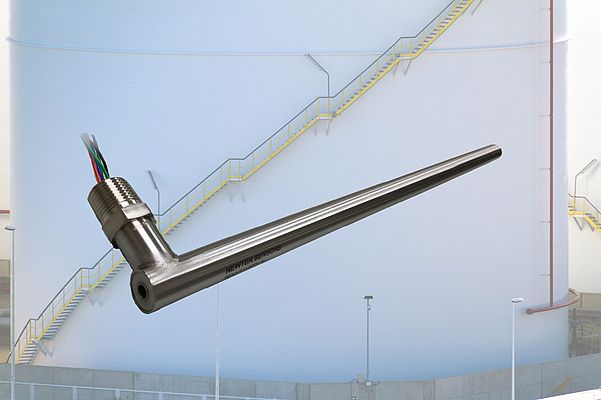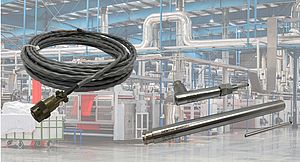NewTek Hazardous Location Position Sensors monitor the structural integrity of LNG tanks, helping to meet Federal Energy Regulatory Commission (FERC) regulations for structural health monitoring. To prepare LNG for export, natural gas is cooled to cryogenic temperatures at liquefication facilities, then stored as a liquid until pumped into LNG tanker ships for export. The LNG storage tanks are double- walled, consisting of an inner container that holds the liquid and an outer container of vapor pressure that insulates it and serves as a backup in the event of a leak. NewTek Hazardous Location LVDT Position Sensors measure the inner tank position in relation to the external tank to provide operators with a complete picture of any movement of the structure caused by thermal contraction or expansion in any direction, as well as the settling or shifting of the tank foundation.
Safe operation in hazardous environments
The sensors offer extremely accurate displacement measurement that is essential to monitoring the spacing between the tank containers, which is inaccessible by operators for years at a time. In operation, LVDT brackets are affixed to at least six locations along the outer tank at 60° apart. The LVDT core rod is connected to the wall of the inner tank. The Hazardous Location LVDT provides absolute output with no long-term drift, which is essential as measurements are recorded once every quarter. Serving as part of a health monitoring solution for LNG tanks, the sensors assure the quality of the tank’s structural performance and enable operators to assess a tank’s condition after a major event as is required by the regulations. Approved for use in Class 1, Zone 0, and Zone 2 locations, the hazardous location certifications of NewTek’s NT-HL-750 Series of LVDT are preferred in this application. Even though the space between the inner and outer tank containers is normally filled with nitrogen, a leak in the inner tank can result in gas seeping into the space between the tanks where the sensors operate. Intertek-approved and holding an ETL certification for use in hazardous locations throughout North America, the sensors also operate safely and accurately in hazardous and explosive environments with the presence of flammable or ignitable gases and liquids such as those found in refining and petrochemical plants and pipelines.


















